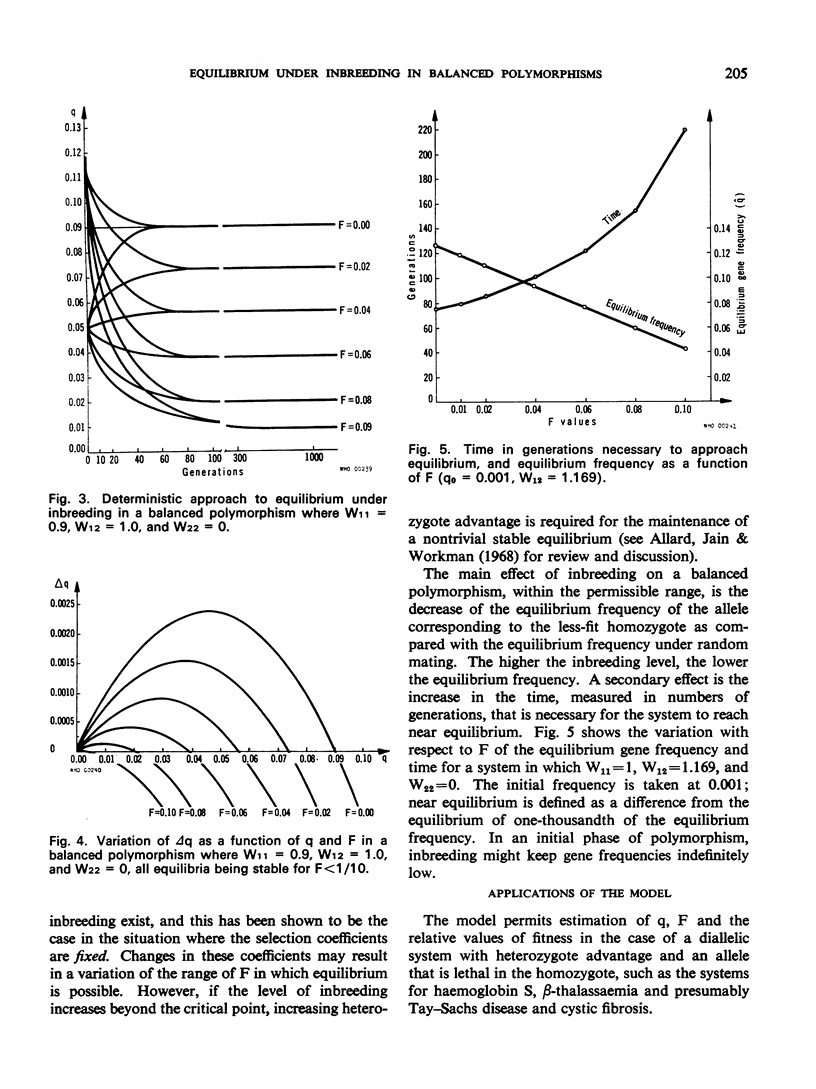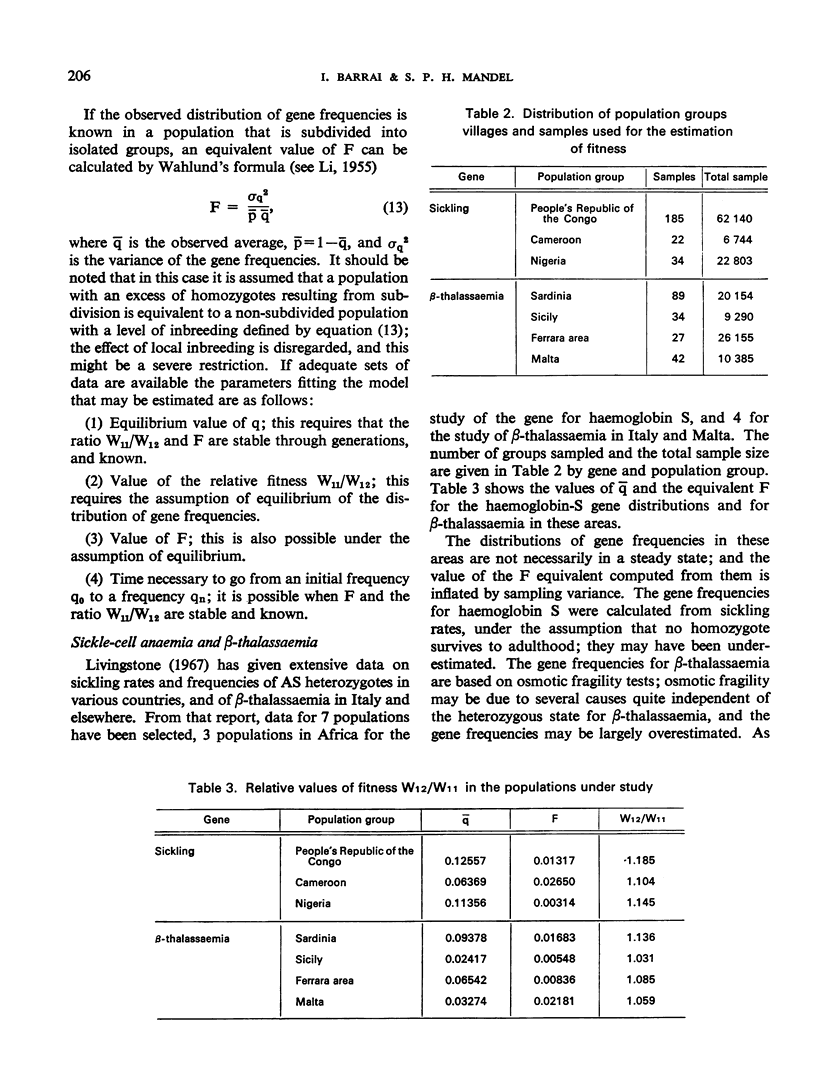Abstract
The results of a study on frequencies of genes causing lethal or sublethal disease are reported in relation to the level of consanguinity and heterozygote advantage in populations. The theoretical background of the population dynamics of genes under heterozygote advantage and in the presence of inbreeding is examined and the theoretical models are applied to the estimation of the level of heterosis for lethal and sublethal genes that are responsible for important public health problems in certain populations; these problems include β-thalassaemia and sickle-cell anaemia. Estimates obtained from the proposed models show a high degree of internal consistency under widely different conditions; data on sickle-cell anaemia from several African populations and on β-thalassaemia from Italy and Malta were analysed. The hypothesis that rare lethal genes, such as those for Tay—Sachs disease, are maintained in the human population by heterozygote advantage is examined and discussed.
Full text
PDF







Selected References
These references are in PubMed. This may not be the complete list of references from this article.
- Barrai I. Human genetics and public health. WHO Chron. 1970 Jun;24(6):241–247. [PubMed] [Google Scholar]
- Li C. C. Genetic equilibrium under selection. Biometrics. 1967 Sep;23(3):397–484. [PubMed] [Google Scholar]
- Myrianthopoulos N. C., Aronson S. M. Population dynamics of Tay-Sachs disease. I. Reproductive fitness and selection. Am J Hum Genet. 1966 Jul;18(4):313–327. [PMC free article] [PubMed] [Google Scholar]
- Shaw R. F., Smith A. P. Is Tay-Sachs disease increasing? Nature. 1969 Dec 20;224(5225):1214–1215. doi: 10.1038/2241214b0. [DOI] [PubMed] [Google Scholar]


